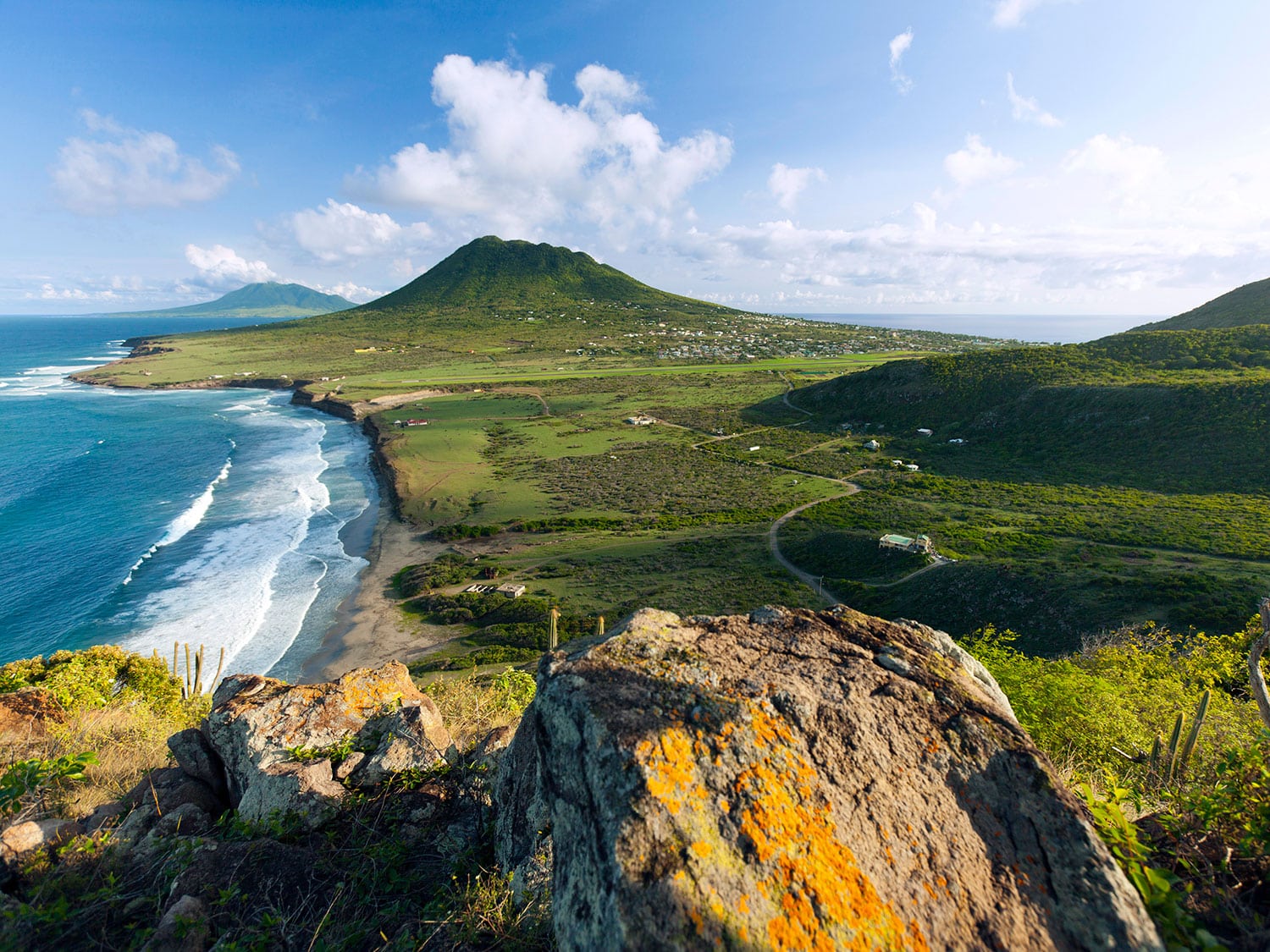Blue Beads, Rich History, And The Many Reasons To Visit Sint Eustatius
Once known as the ‘Manhattan of the Caribbean,’ this charming, understated island remains something far more special.
It's the last day of my first visit to Sint Eustatius. And as the flat sea at Lower Town shimmers like molten silver in the evening sun, I'm searching desperately at the water's edge. Slowly pacing the wet caramel sand, I'm taunted by pink fragments of shells and glittering emerald shards of Heineken bottles, their edges smoothed by the surf. Yet still I bend and squint, hoping to find what I've been told will be my return ticket to this little-known Caribbean island: a Statia blue bead.
"Trust me, the bead will find you," Althea Merkman had whispered in my ear on my first day here. The newspaper correspondent and photographer was my guide. And she made the prediction at the end of her illuminating tour around this compact Dutch-Caribbean territory, which sits a mere 20-minute flight from St. Maarten and just seven miles from St. Kitts—yet feels a world away from both.
As we drove around the island—six miles long and three miles at its widest point—Merkman shared the history of Statia, which changed hands 22 times between the French, English, and Dutch before the Netherlands finally "claimed" it in the 1700s. Wildly prosperous during the colonial era (it was the "Manhattan of the Caribbean," Merkman tells me), it was once home to 30,000 people, the vast majority enslaved Africans imported to work the plantations where sisal, indigo, cotton, tobacco, and sugar were cultivated for sale. Indeed, the country was so wealthy, it was known as the Golden Rock.
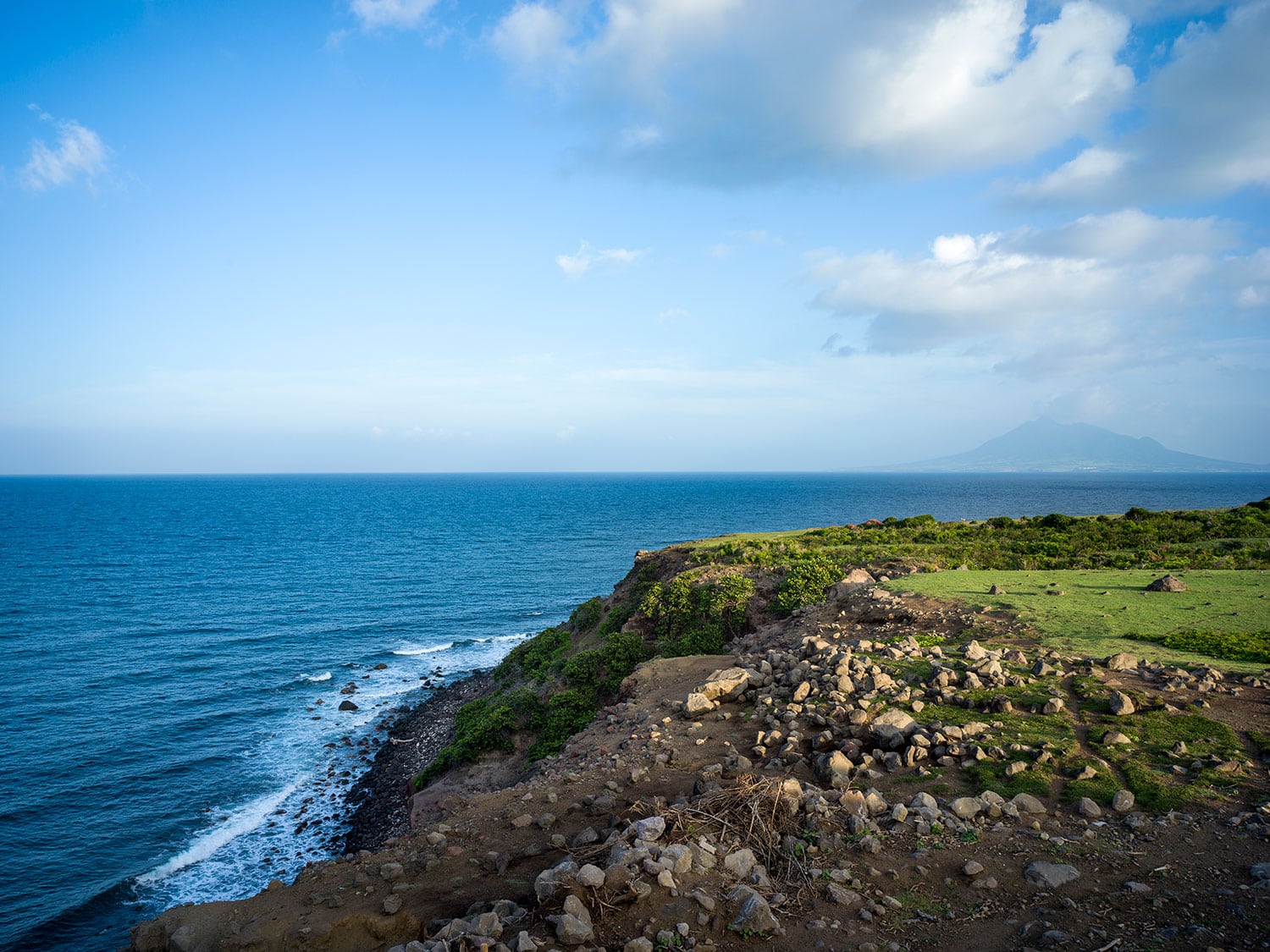
"This was a bustling trading stop, a duty-free port where you could buy almost anything from all over the world," Merkman says as we trundle in our minivan along paved but rutted roads, past villages that still bear the names of former European colonizers: Lynch, Concordia, Zeelandia...
Centuries later, it's a different story. Statia's population hovers at around 3,000. And what was once the Manhattan of the Caribbean is now a sleepy suburb, known only to a select few visitors from beyond the region. If you've never heard of Statia you're in the majority. And if you have, it's likely because you're a diver (the coral here is thriving) or perhaps a hiker, drawn by the prospect of conquering The Quill, the almost 2,000-foot-high dormant volcano that dominates Statia's southern half.
Making the ascent to The Quill's lush crater is on my to-do list, as well. But first I'm eager to learn more about this off-the-tourist-path outpost that, with the opening last year of its first luxury hotel, Golden Rock Nature and Dive Resort, is now prepping to earn its own share of the Caribbean tourism pie.
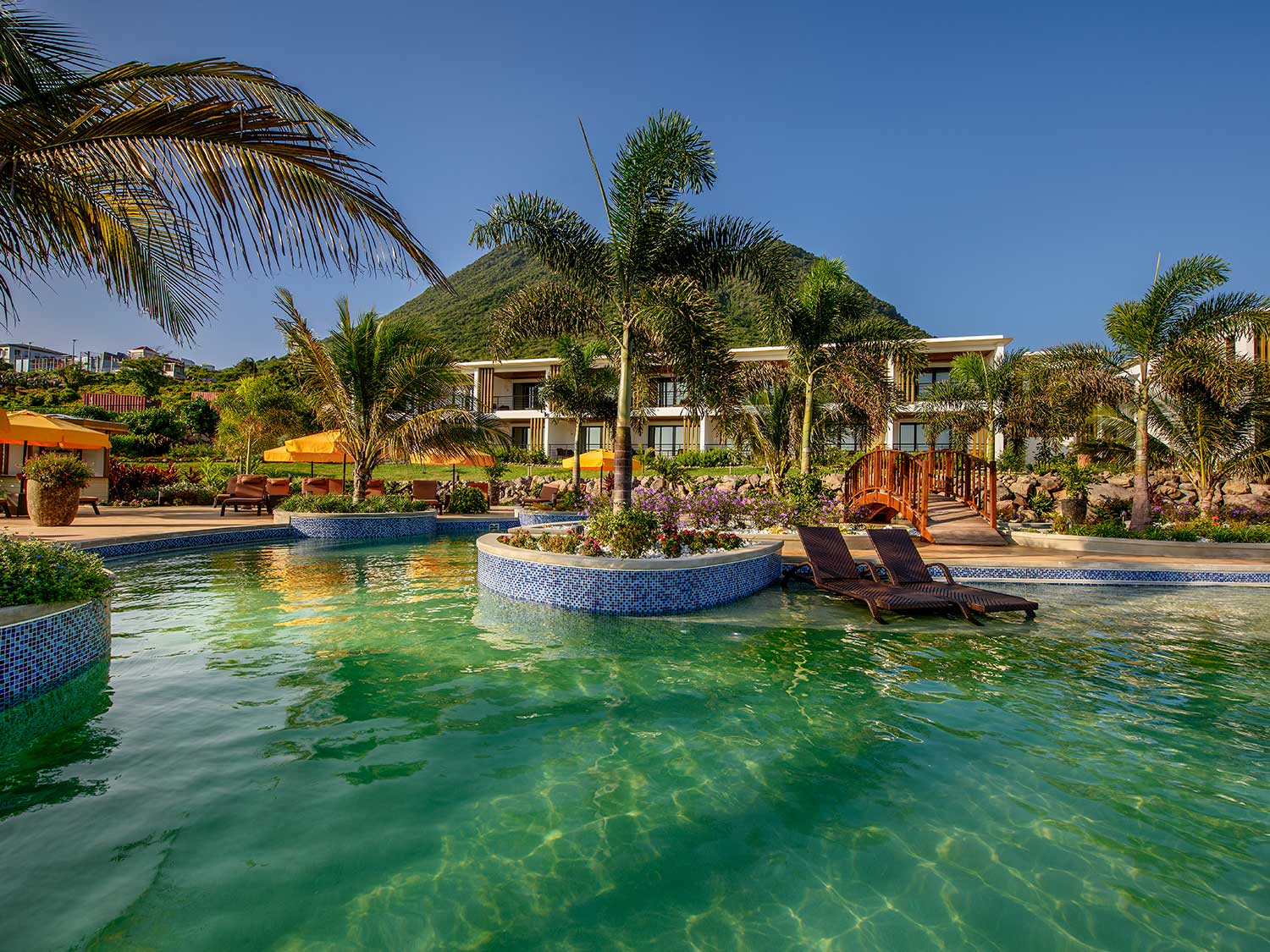
Since nowhere on island is more than a 10-minute drive away, our tour takes little more than a couple of hours. Still, there's lots to learn. Statia isn't a beach destination. It has only a handful, and just one with white sand. There are a whopping 19 forts, however, and so many well-preserved colonial buildings that Statia promotes itself as an open-air museum. Indeed, history comes to life in the capital, Oranjestad, where green-and-white "gingerbread" buildings are made of cut stone and scalloped white wooden shingles. I get an appreciation of the island's strategic position from my perch on a cannon at Battery de Windt, from where I can see St. Kitts—just one of the countries (Nevis, St. Barts, Saba, and St. Maarten are the others) that surround Statia.
And I feel Statia's history as I trace my ancestors' footsteps along the island's oldest road, The Old Slave Path. Built by hand by enslaved Africans in 1636, it begins beachfront at Orange Bay and climbs up the steep hill to Oranjestad. Here, in Wilhelmina Park, is where Merkman tells me those same Africans were sold into slavery.
That's when I first hear about the blue beads. Found exclusively on Statia, these five-sided glass beads (said to have been commissioned from Venetian glass blowers by Dutch traders) were used, I'm told, as currency to "pay" the enslaved for their work. (In contrast, transactions between Europeans were made in "real" money.) To gain permission from the Dutch authorities to marry, an African man needed to have saved enough blue beads to be strung around the waist of his future wife. Centuries later, these cobalt beads are elusive but still found on the island, dark blue reminders of an equally dark past.
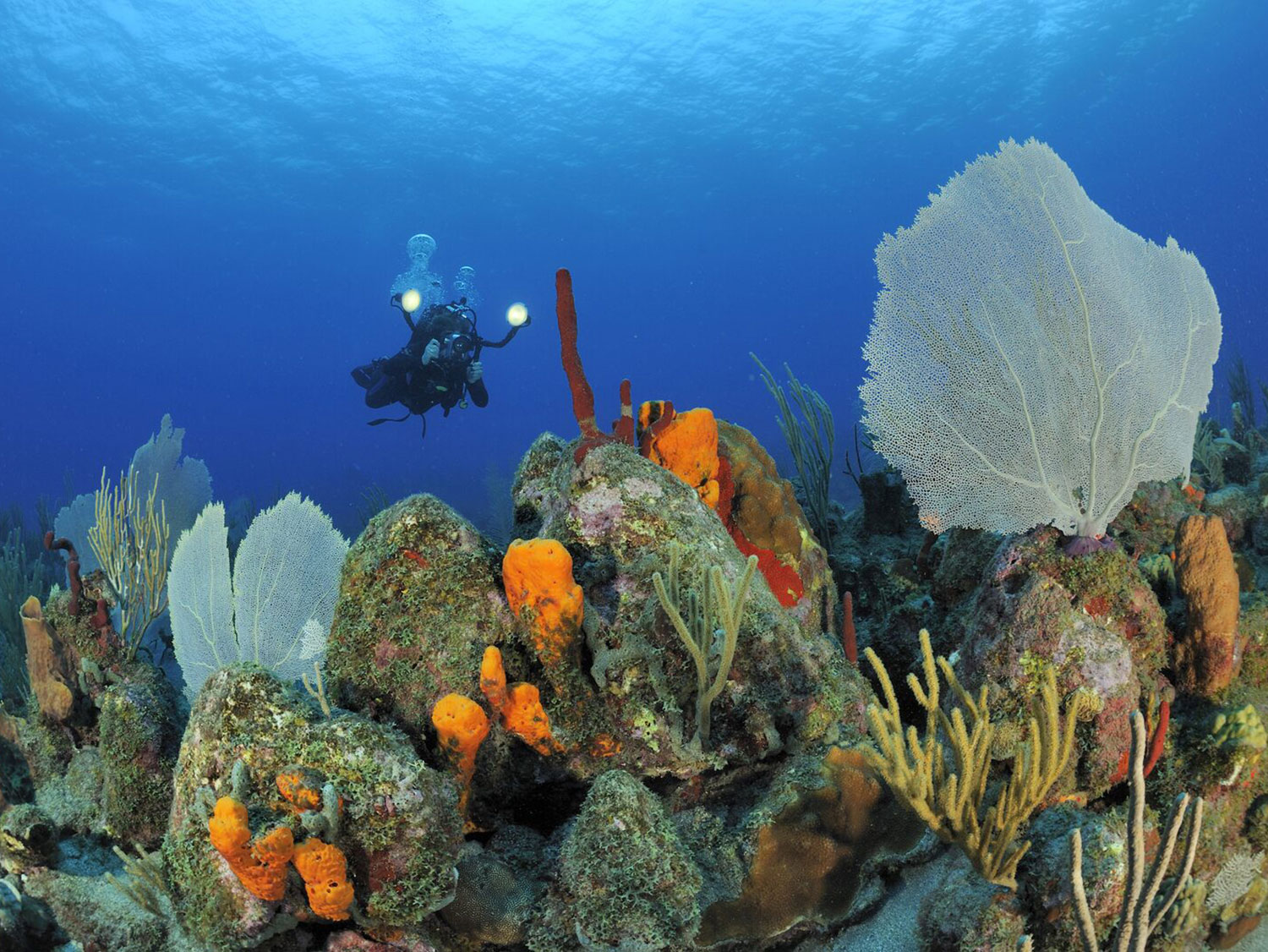
Merkman tells me the most fruitful hunting ground for the beads is on hillsides or on the beach, particularly after heavy rain. Rumor has it that when the enslaved were finally emancipated and their currency rendered useless, they triumphantly tossed all their blue beads into the sea. So, divers and snorkelers come across them underwater, too, usually after storms have churned the seabed.
Merkman shows me one she found decades ago as a child, now strung on her necklace. Back then it was common to find beads still strung together, she says. Now you have to look harder to find them. There are several colors of glass beads—some solid, some patterned and striped—that turn up on Statia and in other islands. But only the pentagonal blue ones are found here, Merkman says. And they're the only historical artifact visitors are allowed to bring home from Statia. You can buy reproductions made on the neighboring island of Saba, she says, but I'll know an authentic one by its weathered texture and telltale central hole.
"They say you don't find blue beads; they find you," Merkman tells me with a glint in her eye. "And if they do, it means you'll always come back to Statia." And with that, I have a mission: to find (or be found by) this symbol of my ancestors' travail and triumph.
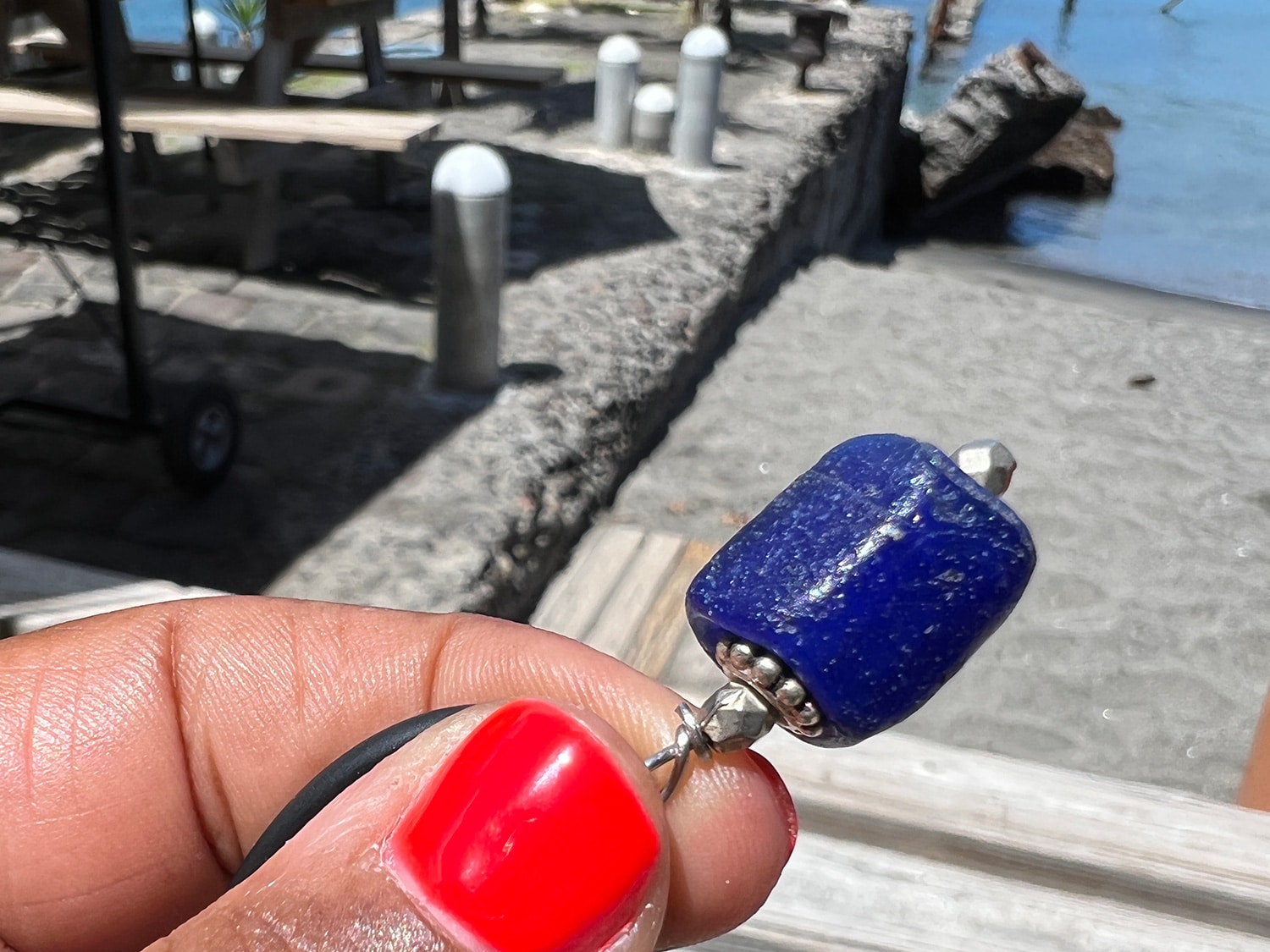
The next day, on an early morning hike up The Quill, I fix my gaze downward at my feet, and not just because the arid earth and brown leaves carpeting the terrain make for a slippery ascent. My eyes are peeled for a glimpse of cobalt, a tiny bit of blue glinting in a shaft of sunlight piercing the thick forest canopy. But I clamber the two miles to the crater and back with not a single glass bead for my efforts, just ashy ankles and a sweat-stained T-shirt.
I keep a look out later that day when we take a walking tour of Oranjestad, hoping to find one secreted in the dirt beside one of its historic buildings. I search the cobblestone grounds of Fort Oranje, where the blue, yellow and red Statian flag flutters from a pole high above Orange Bay. But I have no luck there, either. So now, after a sunset cocktail at Barrel House (an 18th century warehouse now restored and converted into a restaurant and bar), I make one final effort. Stepping down from the waterfront deck, I kick off my sandals and stride onto the sand, hoping that even in the waning light "my" blue bead, the one that will bring me back for a longer visit, will find me.
But it is not to be. All too soon the sun dips below the horizon and it's time to leave. An elegant dinner and a plush ocean-view suite are waiting for me at Golden Rock. (Thirty-two of its suites are complete, and when the remaining 53 open by the end of 2022, they'll almost double Statia's room stock.)
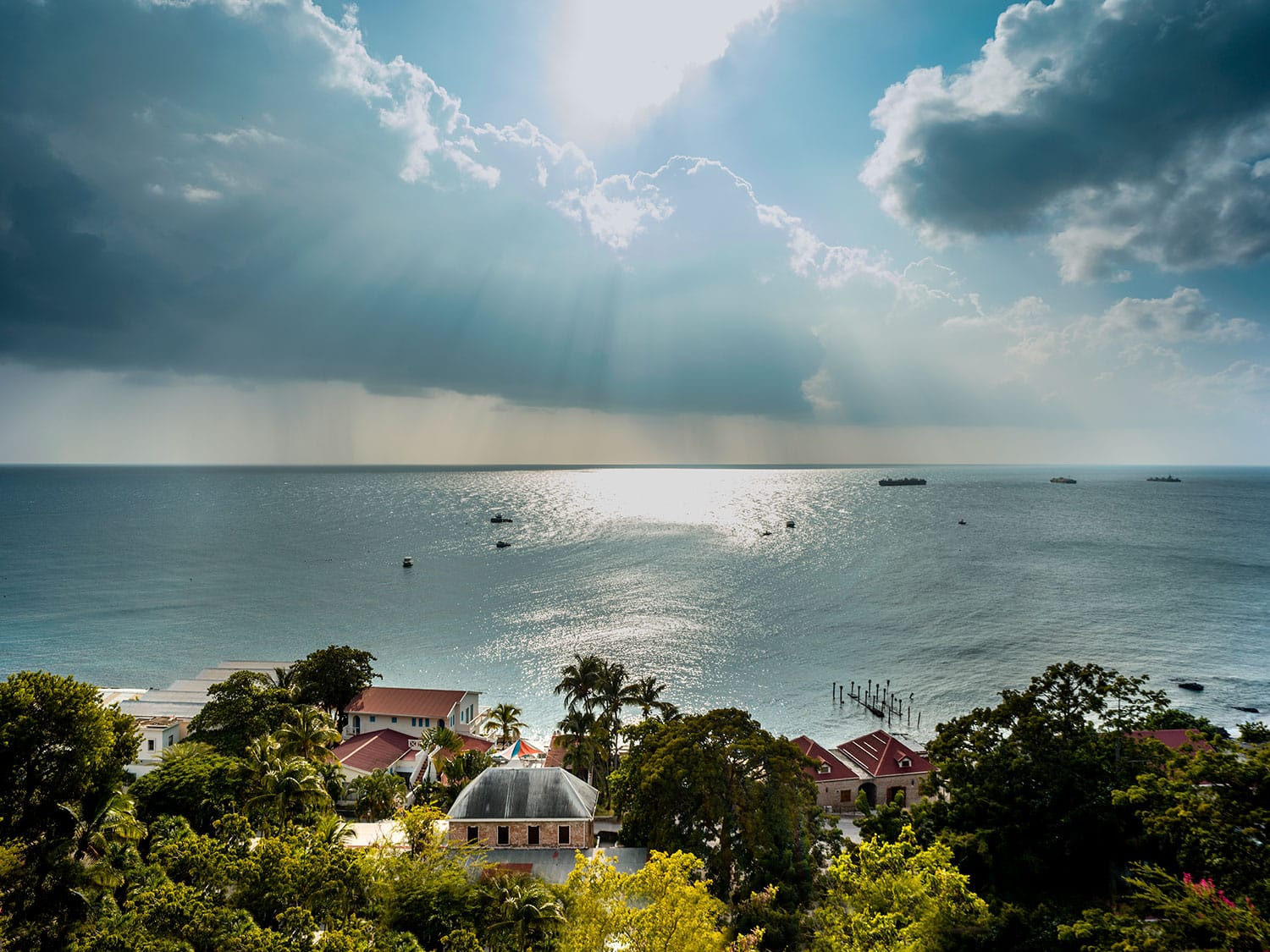
Over dinner at Breeze restaurant that evening, my companions—none of whom had even heard of Statia before—share their unanimously positive impressions of Statia. We agree that it's been a special trip, made all the more so by the people we've met here and the privilege of having enjoyed a place so few ever visit. After dinner, as I stroll the winding pathway back to my suite, I realize that my happiness at visiting Statia is tinged with longing for a few more days to explore it.
The room lights are low as I enter, a bedside pendant lamp illuminating a note on the bed. "If you believe in fairies, look under your pillow," it cryptically reads. I lift up my pillow and find underneath it a small silky drawstring pouch. Loosening the strings, I shake something small but sacred into my hand: a Statia blue bead has found me.
